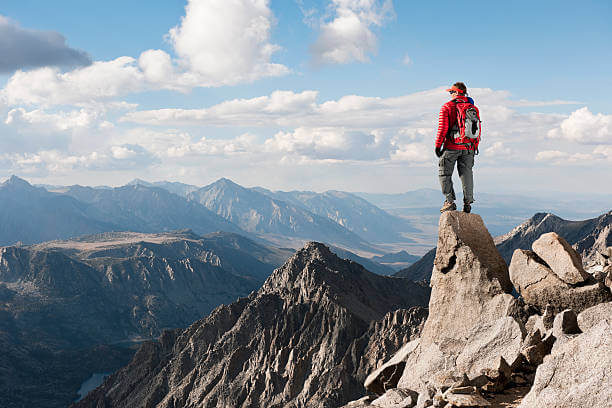Mountain climbing is similar to hiking and requires certain equipment. It involves cleated boots, thick socks, a map, a compass, a flashlight, sunscreen, and crampons. Crampons are sharp spikes used to grip rocks and ice. A piton is an iron spike with a ring at the end that is used to hammer into cracks. The purpose of these tools is to make climbing more stable.
Belay technique
It is important to remember that belaying is a serious responsibility and it is essential to use the correct belay technique. If you are unsure of how to belay someone, find a back-up player or don’t climb with a player. Your brake hand should never be off the rope and you should always transition your hand to your belay device from a position of strength and sustainability. If you slide your brake hand toward the belay device, you are in violation of the #1 elementary principle.
When belaying, the belayer should never let the rope hang over a ledge. He or she should tie off the climber to the free rope by stacking it in certain positions. When you’re belaying, you should avoid any tangles by placing the rope at the bottom of the ledge or on the ground. Belaying is important and can save a life. But before you start, read on to learn more about belaying techniques.
Equipment required for mountain climbing
Depending on what you plan on climbing, you might need different equipment. A poncho or raincoat is essential, as is an extra-large trash bag. You might also want to invest in an emergency space blanket and a whistle. You can also keep some things handy, such as a pen, notebook, and sun block. Other essential gear includes a compass, a large rucksack with a waterproof coat, a headlamp, and climbing rope.
Some people choose to use belay devices to help them exert tension on a climbing rope. These devices are typically metal and require minimal effort to feed rope. They are necessary for climbing rock faces. If you’re part of a group, many guides provide belay devices, although you can rent them. Generally, these devices are worn on the shoulders. However, if you’re climbing alone, you should bring a harness and a pair of crampons to help you keep your balance.
Safety techniques
While on a climb, there are some basic safety techniques that you can use to ensure your safety. Using the correct climbing footwear is vital. Wearing the wrong shoes can cause you to slip and fall. Make sure your shoes fit you well and have good grips. Also, practice falling so you know what to do in case you slip and fall. This will help you prepare for falling and will give you plenty of warning to call your belayer.
Before you start your climb, make sure you have the right gear and know your limits. Some people climb for the thrill of it, while others do it for fun. No matter what type of climbing you do, you should be aware of your physical limits and never push them beyond them. Once you know your limits, you can begin to practice your climbing techniques and learn about the necessary gear. By practicing your technique, you will be able to climb safely and prevent accidents.
Moraine
There are many reasons to visit the region of Moraine, and one of them is the opportunity to experience the beauty of the surrounding landscape. Climbers can practice climbing skills on the moraine slabs at the Vallunaraju Moraine Camp. The area is home to a variety of rock types and ice forms, including slopes, crevasses, and ice walls. The region is also a training ground for Peruvian mountain guides.
A moraine is a naturally occurring formation of rocks and ice. Moraines only appear in regions where there are glaciers. Glaciers are extremely large rivers of ice that move and shape the landscape over thousands of years. A mountain climbing area is surrounded by several different types of moraines, including lateral and medial. A moraine is a high bank of debris that forms at the base of a glacier. A moraine is also a ground feature that creates irregular rolling topography.
Multi-pitch climbs
If you’ve ever dreamed of leading a multi-pitch climb in a mountain range, you’re on the right track. Multi-pitch climbs are much more challenging than single-pitch climbs, and they’re more dependent on the weather than cragging. Before you head out to climb multi-pitch routes, make sure to check multiple sources of weather information. Keep an eye on it throughout the day, including the approach and the climb itself. Always have a plan B in mind, and always know when to retreat safely to safety.
Belay stations for multi-pitch climbs are different from those for gym climbing and cragging. The belayer is tied to the partner for the entire climb, so it’s important to be comfortable while belaying. You’ll need to make sure the rope is flaked enough to feed easily. Make sure you don’t stand on the rope, though, because the lead climber may pull you into the rock. As a belayer, you’ll also need to be aware of the roof so that your head won’t hit it.
Altitude-related illness
The symptoms of altitude-related illness depend on your age, previous experience with high-altitude travel, and your physical condition. Certain illnesses, such as heart disease, make you less tolerant to high-altitude changes. You should avoid climbing when you’re already ill, and if you’re unsure of your ability to handle high-altitude travel, seek medical attention before embarking on your climb.
The most common type of altitude-related illness is acute mountain sickness (AMS). It strikes approximately forty to fifty percent of mountain climbers and can occur at altitudes as low as 6,000 feet. The symptoms usually start within six to twelve hours of arrival and may begin as early as one hour after you arrive. Symptoms usually subside within two to three days after you’ve acclimatized


